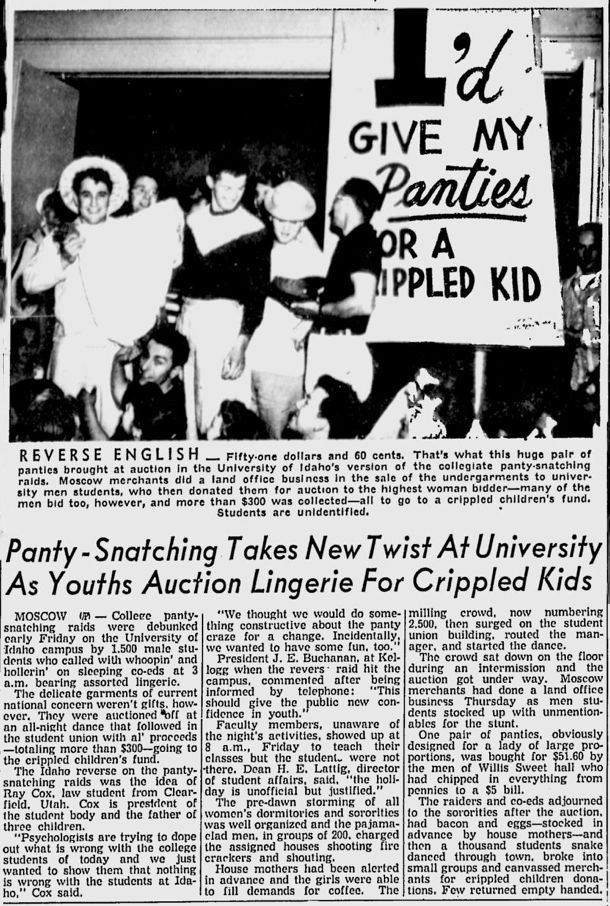1950s
Classes in Store Windows
With school budgets constantly declining, maybe this is a money-saving solution that should be reconsidered. Stop building new schools and conduct classes in store windows instead.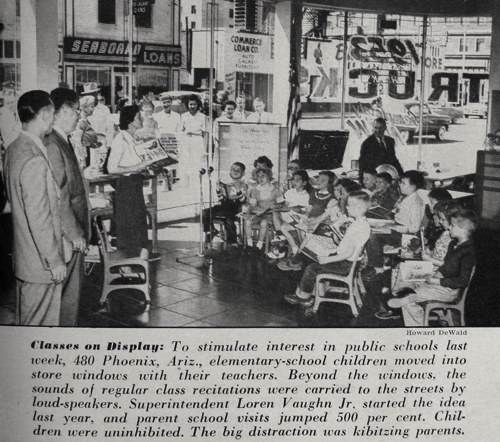
[From Newsweek, April 6, 1953]
Posted By: Alex - Wed Oct 10, 2012 -
Comments (5)
Category: School, 1950s
Welcome to Cumback
Of all the towns in America, why did they choose to feature Cumback in their ad? Or was 1958 a more innocent, pre-internet era when the term 'cumback' didn't have the same connotations (see Urban Dictionary) that it does today ?
Posted By: Alex - Tue Oct 02, 2012 -
Comments (9)
Category: Geography and Maps, Weird Names, Advertising, 1950s
I’d Give My Panties for a Crippled Kid
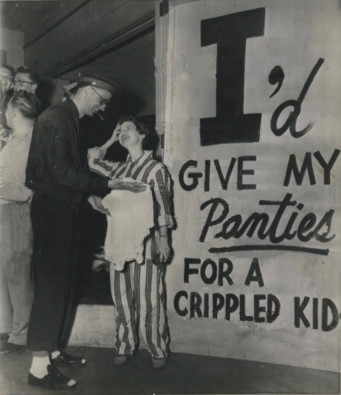
1952 was the year that the panty raid craze hit campuses across America. One of the primary goals of the raids was to cause chaos and commotion (and grab panties, of course), but a few students at the University of Idaho decided to use the raids to achieve a greater social good. They conducted a "reverse" panty-raid. This involved showing up, "whoopin' and hollerin," in the middle of the night at a female dormitory, and then they auctioned off panties to the girls, instead of stealing panties from them. They donated all the proceeds of the auction to the Crippled Children's Fund. It was a nice gesture, but the slogan they chose for the event, "I'd Give My Panties for a Crippled Kid," probably wouldn't pass muster with the guardians of political correctness on campuses today.
Posted By: Alex - Sat Sep 29, 2012 -
Comments (4)
Category: Charities and Philanthropy, Fads, 1950s
How Not To Model Stockings

This picture ran in the January 1953 issue of Newsweek with the following caption:
Elbeo is still in business, and still selling stockings. Could it seriously never have occurred to anyone there that their fashion show, with "enveloping hoods," was going to look an awful lot like a Klan rally?
Posted By: Alex - Thu Sep 20, 2012 -
Comments (7)
Category: Fashion, 1950s
Your Brain on Mescaline
In the early 1950s, German photographer Leif Geiges created a series of abstract images in order to try to portray "exactly what the mescaline subject sees and hears during the course of his artificial psychosis" — as Newsweek put it, which ran his images in its Feb 23, 1953 issue. This was before mescaline was made illegal, back when psychiatrists still believed that the experience of taking mescaline approximated the mental state of a schizophrenic and therefore could be of great experimental value.As for the mescaline imagery itself, Newsweek explained:

"Wallpaper patterns come to life, change to demoniac caricatures, threaten immediate destruction"
More in extended >>
Posted By: Alex - Tue Sep 18, 2012 -
Comments (12)
Category: Dreams and Nightmares, Drugs, Psychedelic, Photography and Photographers, Science, 1950s, Brain, Mental Health and Insanity
Follies of the Mad Men #189
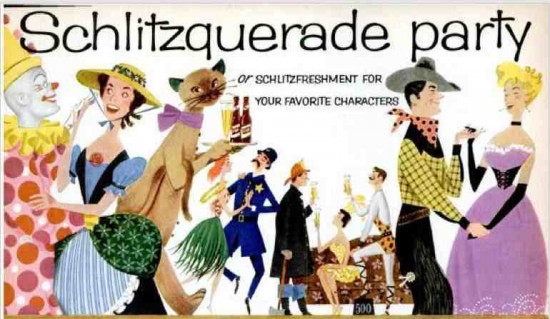
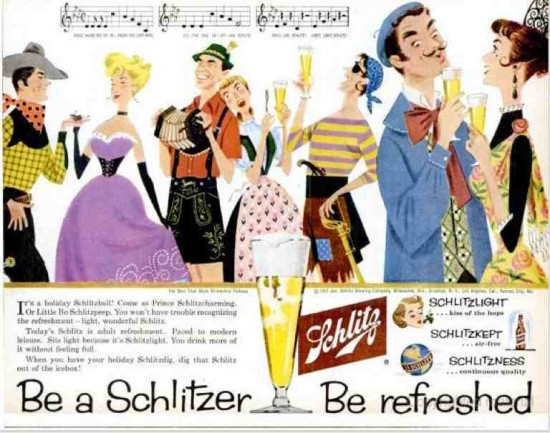
Ad campaign voted most likely to result in scatological jokes.
Also: see the "person" in the
Plainly, this is a encoded warning against aliens among us!
Posted By: Paul - Tue Sep 18, 2012 -
Comments (15)
Category: Business, Advertising, Products, Costumes and Masks, Inebriation and Intoxicants, Excrement, 1950s, Alcohol
Hamm’s Beer
Although Hamm's is still around, this goofy ad campaign is lamentably vanished. Learn more here.
Posted By: Paul - Wed Aug 22, 2012 -
Comments (6)
Category: Anthropomorphism, Business, Advertising, Products, 1950s, Alcohol
Frog Stores
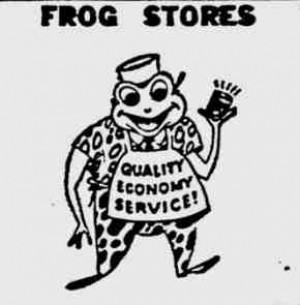
This lurid, almost Lovecraftian corporate icon could be found in the year 1950 in Chuck Shepherd's own Florida stomping grounds. Proof that even 60-some years ago, the F-State was weird.
This link will take you close to the original ad, but you will have to scroll right for another page or so.
Posted By: Paul - Sun Jul 29, 2012 -
Comments (3)
Category: Anthropomorphism, Business, Advertising, Products, Retailing, Horror, 1950s
Lost Continent
"The terrifying rumble of the first atomic earthquake!"
More info here.
Posted By: Paul - Sat Jul 28, 2012 -
Comments (4)
Category: Ineptness, Crudity, Talentlessness, Kitsch, and Bad Art, Movies, Dinosaurs and Other Extinct Creatures, 1950s

| Who We Are |
|---|
| Alex Boese Alex is the creator and curator of the Museum of Hoaxes. He's also the author of various weird, non-fiction, science-themed books such as Elephants on Acid and Psychedelic Apes. Paul Di Filippo Paul has been paid to put weird ideas into fictional form for over thirty years, in his career as a noted science fiction writer. He has recently begun blogging on many curious topics with three fellow writers at The Inferior 4+1. Contact Us |


